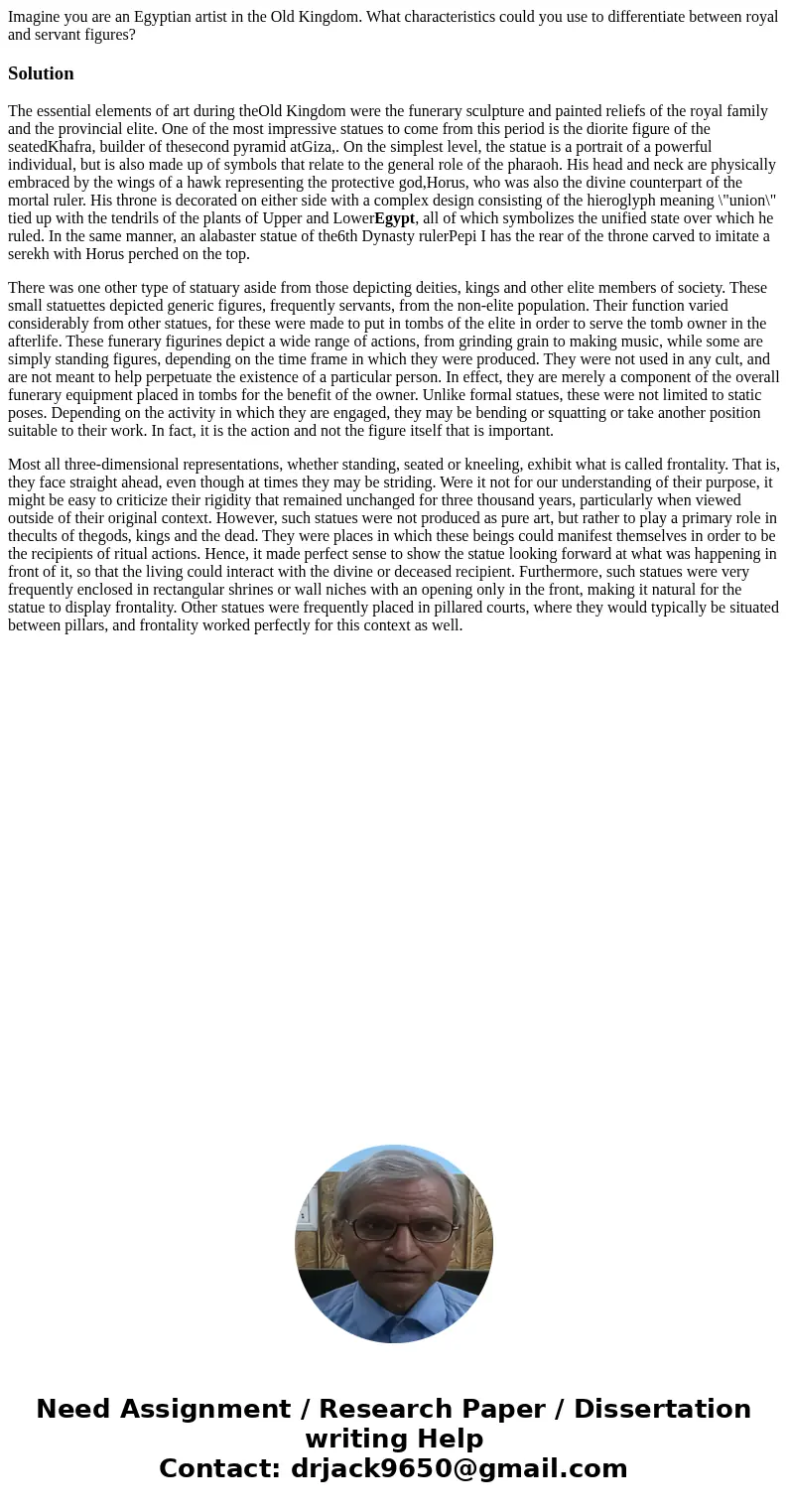Imagine you are an Egyptian artist in the Old Kingdom What c
Imagine you are an Egyptian artist in the Old Kingdom. What characteristics could you use to differentiate between royal and servant figures?
Solution
The essential elements of art during theOld Kingdom were the funerary sculpture and painted reliefs of the royal family and the provincial elite. One of the most impressive statues to come from this period is the diorite figure of the seatedKhafra, builder of thesecond pyramid atGiza,. On the simplest level, the statue is a portrait of a powerful individual, but is also made up of symbols that relate to the general role of the pharaoh. His head and neck are physically embraced by the wings of a hawk representing the protective god,Horus, who was also the divine counterpart of the mortal ruler. His throne is decorated on either side with a complex design consisting of the hieroglyph meaning \"union\" tied up with the tendrils of the plants of Upper and LowerEgypt, all of which symbolizes the unified state over which he ruled. In the same manner, an alabaster statue of the6th Dynasty rulerPepi I has the rear of the throne carved to imitate a serekh with Horus perched on the top.
There was one other type of statuary aside from those depicting deities, kings and other elite members of society. These small statuettes depicted generic figures, frequently servants, from the non-elite population. Their function varied considerably from other statues, for these were made to put in tombs of the elite in order to serve the tomb owner in the afterlife. These funerary figurines depict a wide range of actions, from grinding grain to making music, while some are simply standing figures, depending on the time frame in which they were produced. They were not used in any cult, and are not meant to help perpetuate the existence of a particular person. In effect, they are merely a component of the overall funerary equipment placed in tombs for the benefit of the owner. Unlike formal statues, these were not limited to static poses. Depending on the activity in which they are engaged, they may be bending or squatting or take another position suitable to their work. In fact, it is the action and not the figure itself that is important.
Most all three-dimensional representations, whether standing, seated or kneeling, exhibit what is called frontality. That is, they face straight ahead, even though at times they may be striding. Were it not for our understanding of their purpose, it might be easy to criticize their rigidity that remained unchanged for three thousand years, particularly when viewed outside of their original context. However, such statues were not produced as pure art, but rather to play a primary role in thecults of thegods, kings and the dead. They were places in which these beings could manifest themselves in order to be the recipients of ritual actions. Hence, it made perfect sense to show the statue looking forward at what was happening in front of it, so that the living could interact with the divine or deceased recipient. Furthermore, such statues were very frequently enclosed in rectangular shrines or wall niches with an opening only in the front, making it natural for the statue to display frontality. Other statues were frequently placed in pillared courts, where they would typically be situated between pillars, and frontality worked perfectly for this context as well.

 Homework Sourse
Homework Sourse